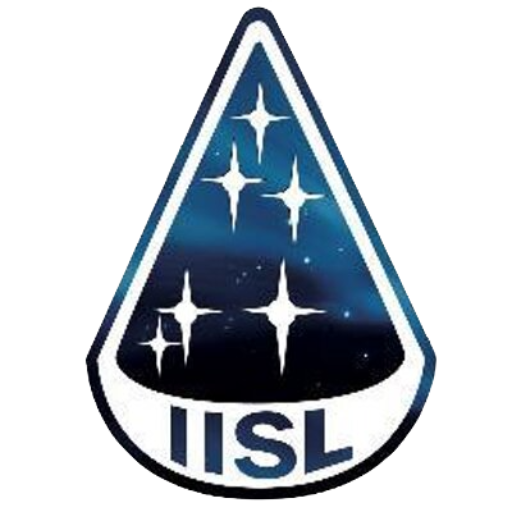ESA Law
List of contributors
Claudiu Mihai Taiatu
Marco Ferrazzani
Anja Nakarada Pečujlić
Simonetta Cheli
Rosanna Hoffmann
Hristina Talkova
Alexander Soucek
INTRODUCTION
by Claudiu Mihai Taiatu
The European Space Agency (ESA) is an intergovernmental organization created by the ESA Convention. ESA law interaction with the European Union (EU) is essential for supporting the increasing role of Europe on space activities at global level. The cooperation between ESA and the EU was formalized through the 2004 “Framework Agreement”. Another key element for the cooperation between ESA and the EU is the Financial Partnership Framework Agreement (FFPA) signed on 22 June 2021, in relation to the EU space programme and the EU’s Multiannual Financial Framework (MFF) 2021-2027. The principle of fair geographical return and the preference clause are part of ESA’s industrial policy and the main elements to differentiate ESA’s procurement rules from the EU’s procurement rules.
by Marco Ferrazzani
ESA Law Series
The European Space Agency (ESA) is an international intergovernmental organization looking back on half a century of achievements in exploring and using outer space. The legal foundation of the Agency is an international treaty commonly known as the ESA Convention, which was opened for signature on 30 May 1975. Since then, with 11 founding States, ESA has doubled its European membership. With its twenty-two member States, three associate members and many international cooperation partners, ESA shapes spaceflight, accelerates European space industry and fosters international partnerships in one of the most exciting domains of human endeavour. The Convention is the fundament of ESA’s legal framework, or – using a different picture – the top of its ‘legal pyramid’, establishing the ESA legal framework for governmental programmes and partnering activities.
The Convention is a powerful tool for cooperation , but doesn’t grant ESA any direct regulatory power over its member states. ESA secondary law – such as Programmes, Financial rules, Procurement regulations, administrative instructions – are strongly derived from its mandate. The Agency’s purpose, in the words of its Convention, shall be to provide for and to promote for exclusively peaceful purposes, co-operation among European States in space research and technology and their space applications, with a view to their being used for scientific purposes and for operational space applications systems. This shall be achieved through elaborating and implementing a long-term European space policy, elaborating and implementing space activities, co-ordinating the European space programme and national programmes, and by elaborating and implementing an appropriate industrial policy.
ESA has two organs: the Council – the Agency’s plenary body composed of representatives of its member states – and the Director General supported by staff, representing the executive side of ESA. Together, they allow ESA to act as an institution with full legal capacity in all jurisdictions. Emanating as a first layer under the Convention are the Agency’s rules and regulations adopted by Council, which apply to the Agency’s own programs. Those include, inter alia, the Financial, Staff, Security and Procurement Regulations, as well as General Clauses and Conditions for ESA contracts, Rules on Information, Data and Intellectual Property and Rules on Arbitration, which can be found here: https://www.esa.int/About_Us/Law_at_ESA/Highlights_of_ESA_rules_and_regulations.
ESA’s optional programmes are based on Programme Declarations, which are international agreements concluded among all or some of ESA’s member States. Annex III of the Convention defines legal conditions for the formation, execution and termination of these programmes. ESA also concludes international agreements with other international organisations and institutions, and with governments, space organisations and institutions of non-member states. Such agreements form the basis of international cooperative space programmes. A particularly important partner for ESA is the European Union, and the legal relationship between ESA and the EU will be explored in a separate article of this series. While science and engineering are at the heart of ESA’s mission, law is the backbone of ESA’s institutional structure: it enables compromise and cooperation, stability and flexibility, and planning and operation for an international organisation that is unique in many ways. More information can be found here: https://www.esa.int/About_Us/Law_at_ESA/Law_at_ESA.
by Anja Nakarada Pečujlić
The European Space Agency (ESA), as the regional space agency in charge of European space activities, is a unique International Governmental Organization (IGO). It does not have the usual tripartite structure of an IGO but instead has only two organs, one decision-making and one executive organ. The main policy and decision-making organ of ESA is its Council in which all the ESA Member States are represented. Even though the ESA Council meets on two different levels, the delegate and ministerial, it does not have two different organs.
There are, however, a plethora of subordinated bodies that help the ESA Council reach its decisions. Moreover, as if becoming an ESA member is not already a complex process, it becomes more complicated in relation to substantial financial burdens. It would be logical that once a country is accepted as an ESA Member State, to participate in all the decisions that concern the agency. However, there are no differentiated levels of development or geographical regions. The only exception are the optional programs, which concern only the participating States. This simple organ structure, combined with a complex accession process, is what allows ESA to reach uniform up to date decisions, to perform checks and balances. ESA can readjust its policies (if necessary) during the ministerial Council every three to four years. Furthermore, ESA’s normative pyramid is another specific feature of this organization.
The ESA Convention, including the five annexes which form an integral part thereof, can be categorized as the main normative source and overarching structure for a wide variety of acts (including many, which contain legal obligations). The objective of the ESA Convention annexes is to elaborate on the provisions of the core text. Building upon this basis, a whole body of secondary derived legal norms has been developed, such as Regulations, Rules, Resolutions, Agreements etc. The Council approves mandatory activities, adopts Resolutions and Recommendations, accepts optional Programs in the form of Program Declarations, and it adopts other acts, that are all secondary derived norms. In a similar manner, the ESA Director General (DG), as the executive body and ESA’s legal representative, can issue administrative and other instructions required for the management of ESA, which are binding upon ESA’s staff. Alternatively, the ESA DG may delegate his authority in defined cases. Lastly, as an IGO cooperating with international partners, ESA can conclude various types of international agreements with different levels of complexity.
by Simonetta Cheli
ESA Law Series
Within the EU-led Copernicus programme, ESA, as a main partner, is the coordinator and system architect of the Space Component, which is composed of dedicated satellite missions called Sentinels, specifically developed by ESA for the needs of Copernicus users, and of “Copernicus Contributing Missions” (CCMs). These areowned or operated by European, national or multinational organisations that alsomake data available to the programme.
It was created in 2010 with the EU Regulation establishing the Copernicusprogramme (still GMES at that time) and subsequently adopted in 2013 with the delegated Regulation no. 1159 on access to data and information. It continued withthe 2014 Copernicus Regulation and with the 2021 EU Space programme Regulation, which implements a free, full and open Copernicus data and information provision and access scheme. This fully applies to the data coming directly from the Sentinels missions.
The thematic information products from the Copernicus services are also made available on a full, free and open basis. They are produced using Sentinel data complemented, where needed, with Very High Resolution (VHR) or other Earth Observation (EO) data coming from the CCMs. The key elements of this data policy can be summarised in the following points: 1) there are no restrictions on the use (commercial and non-commercial) nor on users (European and non-European); 2) a free of charge version of any dataset is always available on the Copernicus dissemination platforms; and 3) data and information are available worldwide without limitation in time.
In order to know if the actual data policy scheme is still the most adequate for the Copernicus objectives, the European Commission published the results of a study on alternative options that could improve the current legal, technical, economic and strategic elements of the Copernicus free, full and open data policy in 2019. The conclusion was that the current data policy was still the better option. This data policy scheme has been implemented mainly to stimulate the European EO services market growth, in particular the downstream sector, with a view to enabling job creation, and to support the European research, technology and innovation communities.
But even if a long-term stability in data policy may be considered essential to allow the commercial sector to establish and consolidate business strategies, for the first time in 2021, the EU Space Programme Regulation contemplated the possibility of different mechanisms for non-EU Member States to access Copernicus data beyond the common dissemination facilities.
On top of that, the arrival of the future dedicated satellite missions (Expansion and Next Generation Sentinels) and the emergence of new entrepreneurs and commercial initiatives for the evolution of the current CCMs, might pose a challenge concerning data access conditions. Therefore, the EC, representing the EU and ESA, will need to jointly discuss the evolution of the Copernicus data policy mechanism to ensure that the main objectives of the programme are safeguarded.
by Rosanna Hoffmann
ESA Law Series
Cooperation in connection with the use of outer space for exclusively peaceful purposes is not only the leitmotif of the Outer Space Treaty, but also of the Convention establishing the European Space Agency (ESA). The Convention sets forth a set of cooperative mechanisms through a variety of space activities and programmes, long term space policy, coordination of European national space programmes and a very specific and unique industrial policy. A short introduction to ESA’s programme structure is imperative for the understanding of the uniqueness of said policy. The Agency’s Convention makes a clear distinction between mandatory activities, in which all Member States participate according to their relative gross national product (GNP), and optional programmes, which allow ESA Member States and others (for example international organisations) to participate based on voluntary contributions and only if they wish to do so. This distinction between the two different set of programme “types” also has consequences on ESA’s industrial policy, especially pertaining to achieving an equilibrium between keeping a balanced return and free competition.
The Agency’s industrial policy is based on a very unique set of objectives, which are stipulated in Article VII of the Convention. According to said article, the industrial policy of ESA must be cost effective, it should improve the worldwide competitiveness of the European industry, ensure that all Member States participate in an equitable manner, having regard to their financial contribution and exploit the advantages of free competitive bidding. The third objective presented here is the particular component of Article VII, as it lays the foundation for measures in connection with fair distribution of contracts among Member States, based on a geographical return calculation method. The “fair return” objective and industrial policy of ESA is further defined in Annex V of the Convention, which stipulates a domestic preference principle in connection with the principle of fair return. The latter meaning that Member States’ national industries must be awarded contracts with a value almost equal to their respective contributions to ESA’s budget, ergo a “fair return” in proportion to their contributions. The return coefficient should ideally be at 1:1, with a possible derogation to no less than 0,8.
The outcome of ESA’s particular industrial policy, but also its procurement system, is that roughly 90 percent of the Agency’s budget is spent on contracts with the European space industry. This is truly unique and allows for a growth within the European space sector, which goes beyond the well-established enterprises to benefit medium and small industry alike.
by Hristina Talkova
ESA Law Series
ESA’s involvement in the International Space Station (ISS) is without a doubt one of the Agency’s most significant projects to this date. Whilst being an astronaut is a dream many space enthusiasts strive toward, as showcased by the number of applications for the Agency’s last astronaut selection, there is also a complex legal and political structure serving as the basis for continued cooperation on the ISS. The multi-level legal structure consists of the ISS Intergovernmental Agreement, Memoranda of Understandings, bilateral Implementing Arrangements, as well as non-legally binding sets of standards such as the Crew Code of Conduct (CCOC) for International Space Station Crews. ESA astronauts travelling to the ISS must adhere not only to ESA’s own personnel policy, but to various other provisions, flight rules and disciplinary requirements set forth by the aforementioned legal framework.
All European Partner States to the IGA are considered to constitute the ‘European Partner’ to the ISS cooperation, represented by ESA as Cooperating Agency. In this capacity, ESA not only liaises and concludes Memoranda of Understanding and Implementing Arrangements connected to the ISS, but also takes appropriate measures through its delegate bodies to make sure that the non-binding instruments, inter alia the COCC, are applicable to European astronauts. The European Partner retains jurisdiction and control over the European research facility, namely the Columbus laboratory, and utilises equipment and facilities of the ISS as defined by the exchange with the other Partners.
The ISS can be considered a truly successful example of international cooperation in outer space activities and the milestone for the Lunar Gateway project – an ambitious endeavour for an intergovernmental space station in lunar vicinity. So far, four out of the five Cooperating Agencies currently collaborating on the ISS project have committed to the project. In October 2020, ESA’s Director General signed a Memorandum of Understanding with NASA that builds on the existing legal framework to further collaboration on a human outpost placed in Moon orbit, which will promote the exploration and peaceful use of outer space.
For NASA, the Gateway is part of its Artemis programme. It is paramount to however distinguish the aforementioned Memorandum of Understanding between ESA and NASA from the Artemis Accords, a set of principles in the form of a political commitment, presented by the US to other states. While some of its member states have undertaken this step, ESA is not a signatory of the Artemis Accords. This is however not necessary for the continuous cooperation, as outlined above, which will allow for joint exploration of the Lunar surface.
by Alexander Soucek
ESA Law Series
The exploration and the use of outer space are more relevant than ever. Many compare contemporary spaceflight developments with the “Apollo era”, and some even proclaim a ‘new space age’. The UN space treaties continue forming the international legal basis for activities of states in outer space. But global space governance has grown considerably more complex. The domestic regulation of space activities through national space laws is an important element of directing the behaviour of non-governmental space actors.
The Outer Space Treaty does not oblige to enact national space law. However, it establishes that the activities of non-governmental entities in outer space shall require “authorisation and continuing supervision by the appropriate State Party”. And even beyond that, it is states which transpose the principles of the space treaties into the domestic sphere, a process that forms part of the relationship between international and national law. National space acts can therefore be viewed as the continuation and completion of international space law.
The European Space Agency (ESA) is an international intergovernmental organisation and a prominent actor in space law. Between 1975 and 1979, the ESA Council decided to accept the rights and obligations provided for in the Rescue and Return Agreement, the Liability Convention and the Registration Convention. In addition, the ESA Director General established internal instructions and procedures such as standards for the technical requirements on space debris mitigation for all Agency projects. Similarly, the registration of ESA’s spacecraft is regulated through a binding internal act, specifying procedures in response to Art. II and IV of the Registration Convention.
ESA also assists its Member States, on their request, in the establishment and implementation of national space legislation through legal and technical advice, a role repeatedly endorsed by the ministers of the 22 ESA Member States. Many ESA Member States have already engaged the Agency, benefitting from its expertise, heritage and network. Besides general counselling services for the drafting of new space laws, ESA can enter into technical assistance agreements with national authorities in order to help validating the accuracy and completeness of technical information, and the technological reliability and quality of a satellite and its associated systems, in connection with licensing applications.
ESA has, however, no legal competence to certify space systems on behalf of national authorities. The delivery of technical assistance and expertise to Member States is rather to be understood as giving a helping hand to legislators and regulators in what is a highly complex subject matter. In this way, ESA not only acts responsibly for its own space missions but is at the service of others to support the rule of law in outer space, too.
The IISL Knowledge Constellation platform can only advance and expand through the contributions of brilliant minds from around the world. Become a part of the change and share your knowledge, engage with one another, get to know the way others reason, and help reduce the gap in accessing the interconnected knowledge within space law.
The views and opinions expressed in each contribution are those of the respective authors and do not necessarily reflect the official position of the IISL.
© 2025 International Institute of Space Law (IISL). This work is licensed under a Creative Commons Attribution-NonCommercial 4.0 International License.


